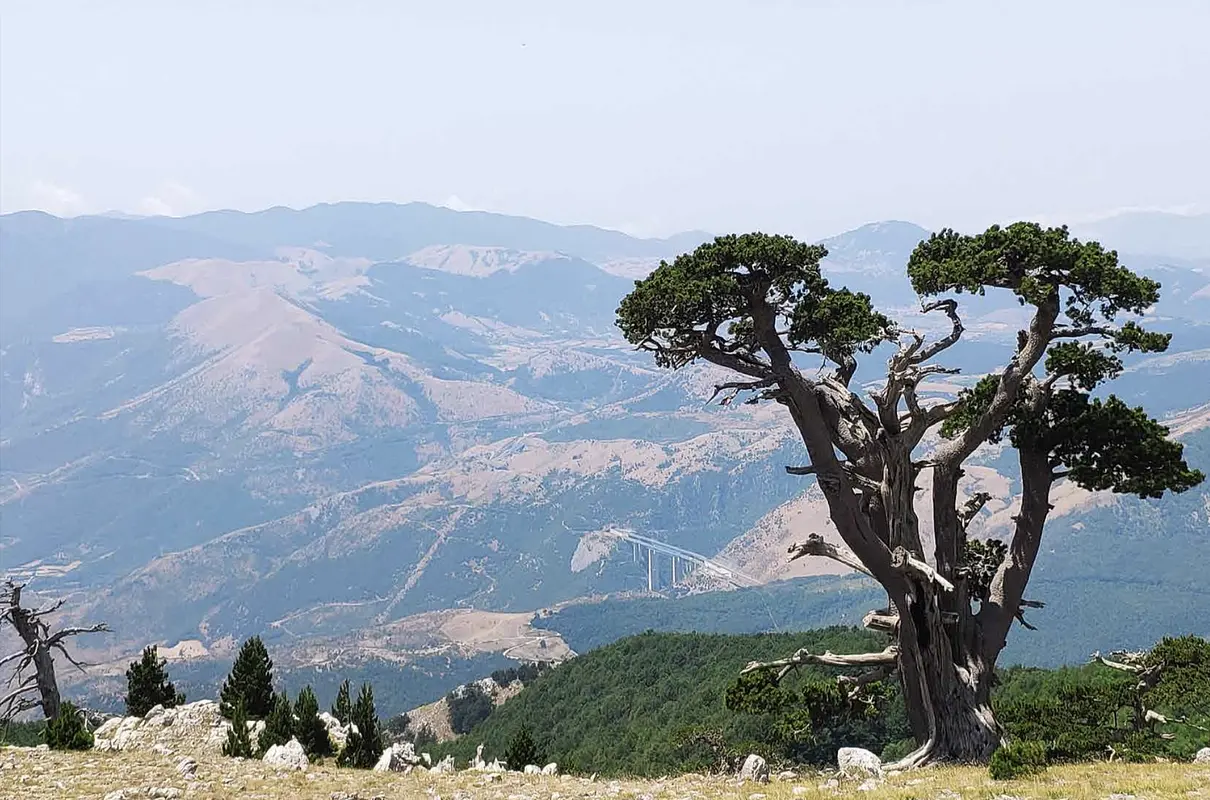




The "broccoli" of Castrovillari
The loricate pine, a symbol of the Pollino National Park

Where

What is the "Broccolo" and where is it found?
In the municipality of Castrovillari (CS), in the locality of Pollinello, stands majestically a monumental loricate pine belonging to the species Pinus heldreichii Christ syn Pinus leucodermis Antoine. It is believed to be the most imposing specimen in the entire Italian territory and has become the symbol of the Pollino National Park. "Age and/or size," "form and bearing," "ecological value," "botanical rarity" and "landscape value" are the criteria that have decreed its monumentality.
Why it is special: the numbers of "Broccoli"
500-600 years old and a trunk circumference of 600 cm. It stands at 2004 meters above sea level and rises 12 meters toward the sky. It is the wind, to which the tree puts up its centuries-old resistance, that is the artist who shaped and molded it, giving it that distinctive shape that has earned it the affectionate nickname "broccoli."
Not to be missed
Walking in the Pollino National Park, in the same area as our tree, we might come across another loricate pine that, although not monumental, is still worth admiring for its remarkable size: a circumference of 540 cm and a height of 10 meters. These are rare encounters: in fact, loricate pines are found only here and in the Balkans.
Curiosity: a soldier's name
The "lorica" was the armor that protected the shoulders and chest of Roman legionaries. The name "loricato" derives precisely from the particular strength and toughness of the bark of our pine, on which over time trapezoid-shaped and deep gray scaly plates appear, reminiscent precisely of the armor of ancient Roman soldiers.
Enter the Map of Italy's Undiscovered Wonders and find treasures where you least expect it... Inspire, Recommend, Share...
Contacts
Collections
The Map thanks:
In the Community
Enter the Map of Italy's Undiscovered Wonders and find treasures where you least expect it... Inspire, Recommend, Share...
Where

Contacts
Collections

